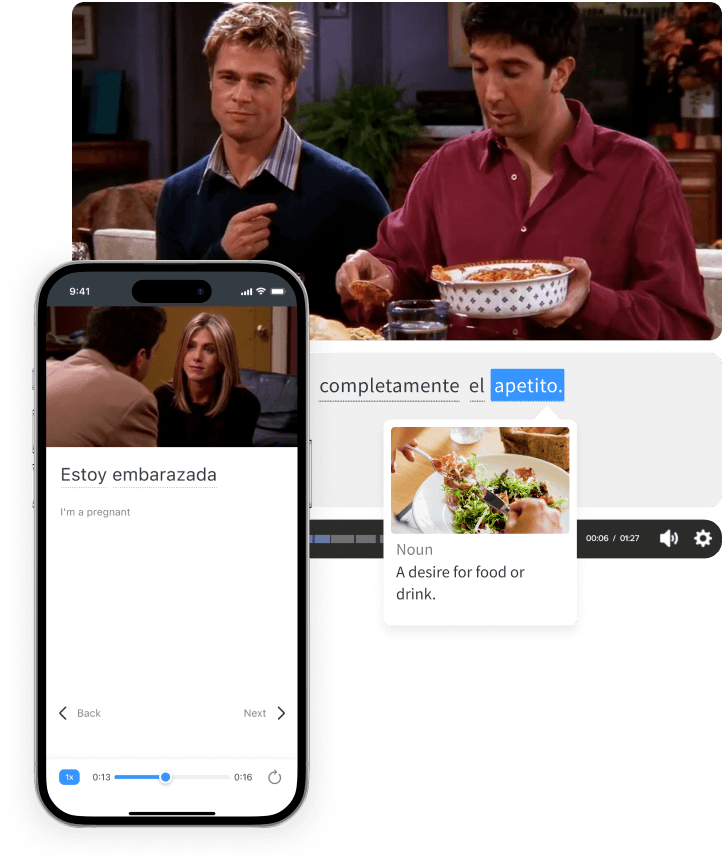
How to Use Translation in Language Teaching
How about some time travel?
Let’s go back in time to experience the old days for a few minutes.
Come with me to a day when language classrooms looked very different from what they look like now.
Back when students sat neatly in rows. And even though it was a language class, no one was talking—except the teacher lecturing at the front.
The class diligently copied down notes on verb conjugation and grammar.
If they weren’t doing that, they might have been doing a dictation activity or (gasp!) translating something.
It’s hard to imagine that any of these students can actually learn a language this way! But years ago, this was the norm.
Download: This blog post is available as a convenient and portable PDF that you can take anywhere. Click here to get a copy. (Download)
The Right Way to Use Translation in Language Teaching
As trends wax and wane, many of these activities have fallen out of favor. We have moved away from the Grammar Translation method, with its emphasis on the memorization of explicit verb charts and rules. And along with our rejection of this method, we have left behind translation.
Many of the reasons for this are good ones. Gone are the days when our goal in language learning was memorization. Communication is now our main objective when teaching a foreign language, and translation doesn’t seem to promote that.
We’re afraid that translation will leave our students trapped inside their heads, stranded in the endless vortex of converting each word to their native language, never being able to speak or understand.
But we now understand that translation is not all bad. There is some compelling research which suggests that it has many benefits in the language classroom, as long as it’s used the right way.
Why Translation Can Be Great for Your Students
Here are a few reasons why it’s worthwhile to spend some time teaching your students translation.
It’s a useful life skill
In many cases, we’ve dropped translation for communication, believing that the latter is the more useful skill.
And it’s true that teaching our students to converse is our ultimate goal.
But pause for a moment and think about how often translation is used in our day-to-day lives—especially among people who travel abroad.
Have you ever had to translate a menu? Or a train schedule? Or be a mediator between two parties who each speak different languages? Depending on how frequently your students travel or the type of job they work, these actions could be part of their daily routine.
For all these real-life situations, translation is necessary. And practicing it gives your students an extra competitive edge to succeed in a multilingual world.
Students believe in the power of translation
The ability to translate a conversation or a passage of text gives students a feeling of accomplishment like no other. They see it as evidence of their mastery of the language—even though we, as teachers, understand that there’s a lot more that goes into learning a language. The fact remains that when students feel empowered, there’s no limit to what they can do or what they can learn.
Translation helps students understand their native language better
Yep, you read correctly.
The process of converting one language to another gives your students unique insight into their own language. They will gain a valuable perspective on the intricate ways in which languages differ from one another.
Even if you don’t formally teach translation, students are still silently translating anyway
As much as you try to steer your students away from translation, they have a natural inclination to do it. If you say something in the target language, they are already translating it in their heads. So why fight it when you can integrate it into your lessons?
When done correctly, translation can perfectly complement your language lessons. But translation has its drawbacks too, especially if not paired with engaging, conversation-building exercises. Below are some ways translation can inhibit language learning. And by understanding ways translation can be counterproductive, you’re better equipped to employ it properly in the classroom.
How Translation Can Be Harmful
Before you get too excited about your newfound permission to translate, let’s step back and look at the big picture.
Relying on translation activities too much in the classroom is not a good idea either. Here’s why.
It keeps students from learning how to think in the target language
Translation is a great skill to have, but it’s not the goal.
The goal is to get students to the point where they are not just speaking the target language, but thinking in it too.
Too much translation can get your students into the bad habit of translating from their native language every time they speak.
For example, let’s say they see an image of a cat. If they are translating, they must go through several steps to be able to communicate what they see in the target language. First, they recognize what it is. Then, they must think of the word in their native language.
“Oh, that’s a cat.”
Then, they must think of the target language word for it.
“The word for ‘cat’ is __.”
This may seem simple enough, but now imagine trying to communicate a whole sentence that way! It’s a long process which makes spontaneous conversation almost impossible.
But if your students are already thinking in the target language, they can skip over all those steps, identifying the word for “cat” and communicating it immediately.
Translation has its limits
Have you ever tried using Google to translate text from one language and then back again? The results can take you light years away from the text’s original meaning…and hilarity ensues.
Translation is a useful tool for understanding language, but it will only take you so far. What’s more, translating from one language to another makes it easy to lose the nuanced meanings associated with words. Hence the phrase, “lost in translation.”
Subtle language differences are hard to capture
Translation often fails to take into account differences in things like word order, idioms and figurative language.
It’s important for students to master these differences in order to communicate correctly. And translation doesn’t allow them to do that.
With these conditions, translation can still be incorporated in your classroom. Want to learn how to make translation work for your students?
You can start by adding FluentU to your lessons.
FluentU perfectly compliments language translation by teaching students language like a native speaker. Instead of teaching students how to translate words and phrases, FluentU’s curriculum allows students to learn by exposure to authentic content. When paired with translation exercises, you’re able to give a more balanced learning experience that everyone enjoys.
Here are some activities which allow you to use translation to help rather than hinder communication.
Translation Activities
With all the potential benefits of translation activities, they also have the potential to get very boring. Especially if you use the same texts and the same lesson format over and over.
How about a few new exercises to add to your repertoire?
Use songs
Music is everybody’s first language. Along with food and art, it’s one of the things that connects us across language barriers.
There are many popular songs which have versions in multiple languages. Some examples include:
If students are already familiar with the song in their native language, they will already have an instinctive connection to the lyrics.
If you’re looking for lyrics to multilingual songs, check out the website Genius. Simply type the name of the song into the search bar to bring up the lyrics. You can even search for the lyrics in a specific language, which is really convenient for language teachers!
Start the activity by playing the song in the target language, letting students read the lyrics to follow along. Then, break them into small groups and have students work on translating it together. Groups make it possible for students to participate even if they don’t know the song well.
Fill in the blanks
Filling in blanks in a printed conversation allows students to practice several language skills at once. Provide the conversation in both languages, with gaps in the target language copy. Ask students to work on filling in the missing words or phrases. This will get them thinking about differences in their language and the target language.
Pre-teach vocabulary
Teach students key vocabulary terms before presenting a target language text. Use visual aids, including video clips, body language, and images. Once they know the vocabulary, provide them a brief paragraph to translate, incorporating the vocabulary words just covered.
Fun with Google Translate
As we mentioned earlier, you can have all kinds of fun translating phrases with Google Translate, translating back to the original language. For best results, use long phrases with plenty of idiomatic expressions and see just how mangled the definitions become!
While this is not necessarily viable practice with translation, it’s a hands-on lesson in some of the pitfalls of online translators, and will give your students a real appreciation of how tricky it really is.
Translation may not be in vogue in language teaching right now, but it definitely has value, as long as you don’t use it all the time. Remember that the best language teaching combines a variety of methods, rather than relying on just one. Used in tandem with other activities that are more communicative in nature, it can be a powerful tool in building your students’ language skills.
Download: This blog post is available as a convenient and portable PDF that you can take anywhere. Click here to get a copy. (Download)




